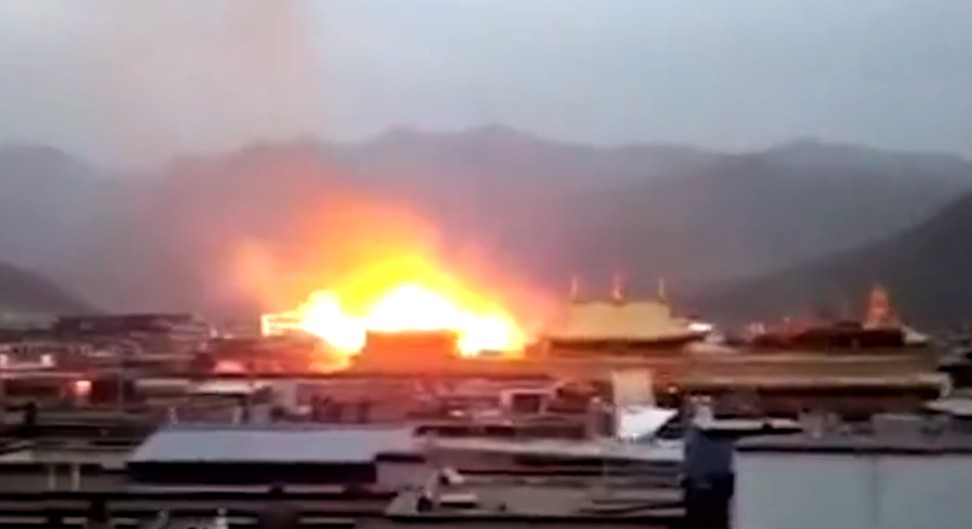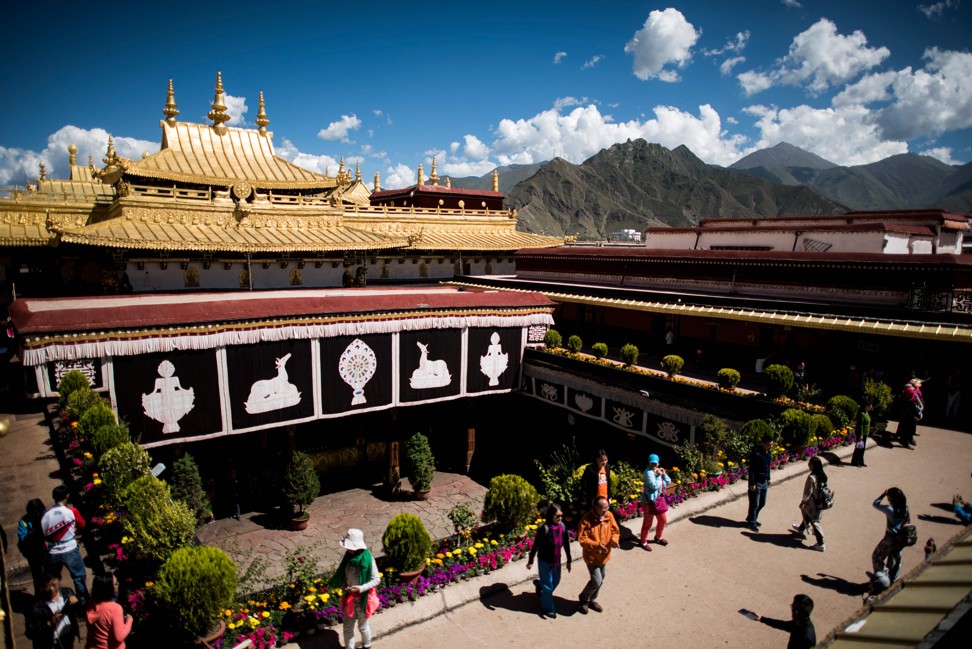
Blaze at Jokhang Temple not caused by arson, Tibet police say; no relics damaged
No reason given for why fire in a ventilation chamber started, but all cultural treasures have been accounted for, report says
A preliminary investigation into the cause of last weekend’s fire at Jokhang Temple in Tibet has ruled out arson, according to a state media report citing local authorities, which also confirmed that all of the monastery’s prized relics had escaped unscathed.
Li Bin, deputy director of police in the region’s capital Lhasa, was quoted by Xinhua as saying that the blaze at the monastery on Saturday night had not damaged any of the cultural treasures housed there, including the Jowo Sakyamuni, a life-size statue of the 12-year-old Buddha.
Although no one was hurt in the fire, photographs and videos of the Unesco Heritage Site that many regard as the heart of Tibetan Buddhism engulfed in flames triggered an outpouring of concern among Chinese internet users.
Despite the apparent ferocity of the blaze, the main building of the temple was not damaged, and all 6,510 of its registered relics were safe, the report said.
The fire broke out in a ventilation chamber on the second floor of the rear section of the temple about 6:40pm on Saturday, police said. An area of about 50 square metres was damaged, but the chamber did not contain any artefacts.
The report did not give any explanation for why the fire started.
While they were tackling the blaze, firefighters removed the gilded roof of the main building and “took measures” to protect items contained therein as a precaution against the fire spreading, the report said.
Despite the claim that none of the temple’s artefacts had been damaged, some foreign experts and Tibetans living abroad questioned why photographs and posts relating to the fire were so swiftly censored on Chinese social media.
Robert Barnett, a London-based Tibetologist said on Twitter, which is blocked in mainland China, that a witness told his source that although the Jowo Sakyamuni survived the flames, “its crown melted, its robes were destroyed, and surrounding images and objects were badly damaged”.
Barnett pointed out that in photographs taken the day after the fire and released by state media, as well as in others shared online, a yellow veil could be seen obscuring the figures to the sides of the statue and the carvings behind it.
Similarly, there appeared to be a discrepancy with the Jowo’s attire, Barnett said.
Several weeks before the blaze, the statue was given a new blue-trimmed crown and a new breastplate. In the latest, post-blaze, images, however, although the new breastplate could be seen, the statue was wearing its old crown, he said.
Built in the seventh century, Jokhang Temple is one of the most sacred and important sites in Tibet. Every day, Buddhist pilgrims visit to prostrate themselves there.
In the wake of the fire, which happened on the third day of the Lunar New Year holiday in the politically sensitive region, Tibet’s regional government activated an emergency response mechanism. That led to safety inspections being carried out at all temples and other important cultural sites around the city.



